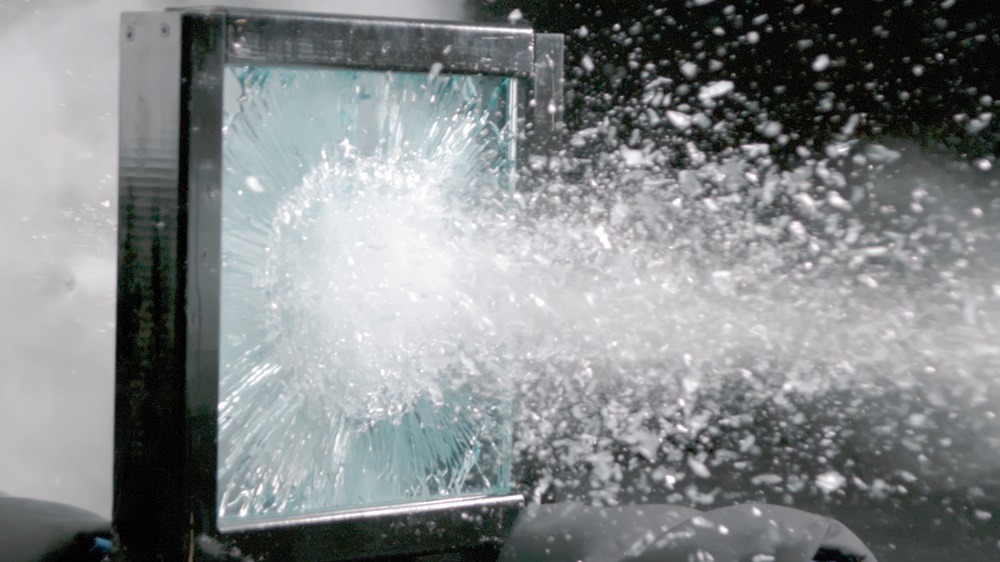One-way ballistic glass stops bullets moving in one direction, but lets them pass through in the opposite direction. This means it is bulletproof on one side, but not on the other.
In most applications, regular bulletproof glass makes more sense than one-way bulletproof glass. Both are meant to delay intruders, but one-way ballistic glass can allow for return fire if the situation calls for that action. This blog outlines how one-way bulletproof glass works, situations that may call for its use, and how Total Security Solutions can help you secure your facility using bulletproof glass.
How Does Shooting Through One-Way Bulletproof Glass Work?
One-way ballistic glass consists of hard acrylic or glass panels laminated to softer polycarbonate panels using adhesive interlayer film.
When a bullet from the threat side of the glass hits the hard acrylic or glass panels, it deforms from an aerodynamic projectile into a flattened, highly resistant mass. This makes it easier for the internal layers to grab it. As the mass travels through to the soft layers of polycarbonate, the polycarbonate panels absorb the bullet’s energy and bring it to a halt without causing harm on the secure side.
When a bullet is fired through the safe side of the glass, which does not have the hard panels, it passes through the soft layers of polycarbonate while maintaining most of its shape and can transfer much of its energy to the hard side. causing shards of acrylic or glass to explode outwards. This phenomenon is called spalling. The bullet will deform, but the spalling will still cause damage to anyone within a few feet of the barrier.
Because the bullets fired from the safe side of the bulletproof glass lose accuracy and velocity, return fire through the barrier should only be attempted by trained professionals at close range.
What Kind of Applications Require One-Way Ballistic Glass?
One-way bulletproof glass is typically used in situations where the personnel on the safe side of the glass are armed and have specific reasons to return fire. In these situations, the goal of counterfire is to delay the attack until backup or the authorities arrive.
A more typical use case is for police stations, where unidirectional ballistic glass can allow officers to return fire from behind the safety of the bulletproof barrier. These types of barriers cannot withstand unlimited shots, but they can save lives while buying valuable time. As another example, one-way glass can protect soldiers at a checkpoint, while allowing them to return fire without leaving the safety of their post.
These are very specific applications for one-way bulletproof glass. Our team will always be upfront about whether your situation calls for this type of protection. For most of our clients, standard bulletproof glass, not one-way ballistic glass, is the right choice.
Remember, no product is infinitely bulletproof, no matter how strong it is. Bulletproof barriers allow you to buy time for the authorities to arrive in case of emergency, not withstand a siege or a shootout. If you’re interested in bulletproof glass, please don’t wait to speak with a member of our team to learn which type is the right product for your facility.
Talk to TSS About Whether One-Way Bulletproof Glass Is the Right Solution for You
If you are considering one-way bulletproof glass for your organization, you may have additional considerations that affect your choices. The ballistics experts at TSS can help you analyze your threat level and choose a bullet-resistant system to fit your requirements. We are happy to provide custom solutions based on your specific needs, threat level, and building layout.
If you have any questions about one-way glass, or would like to talk to an expert about a customized bulletproof barrier, please contact our team for more information.

